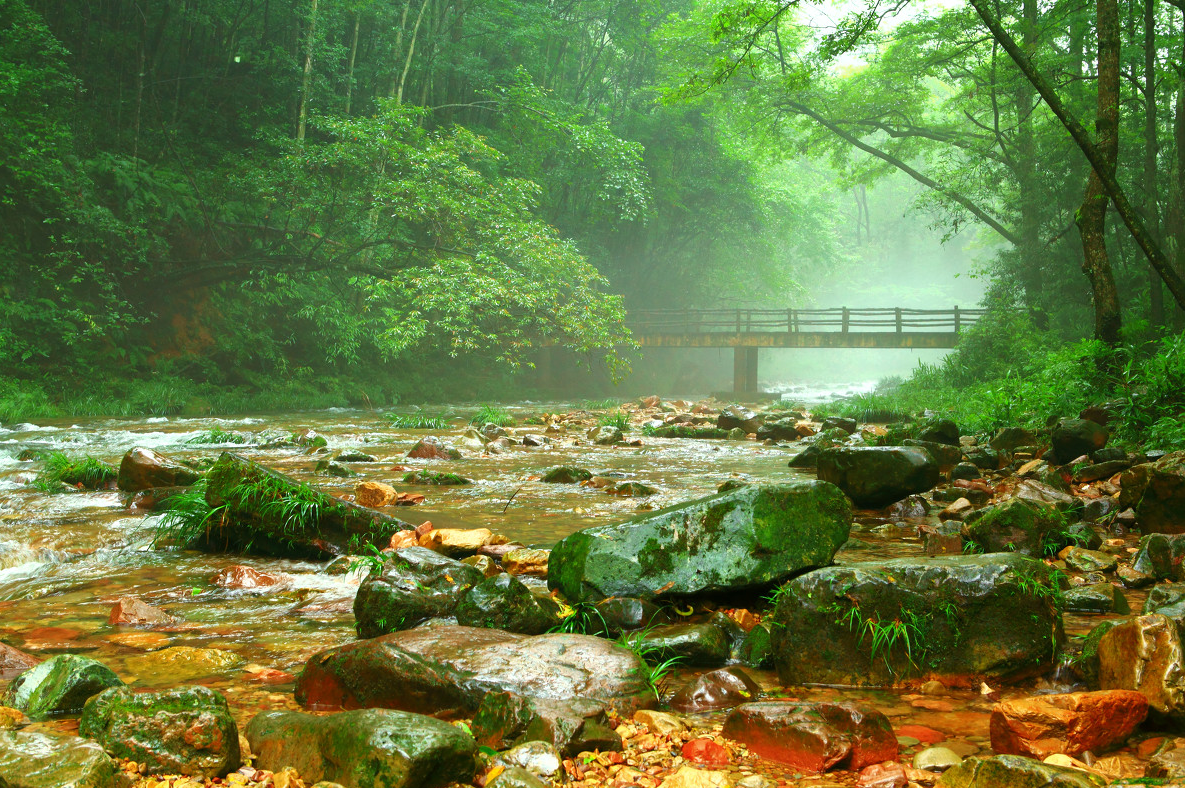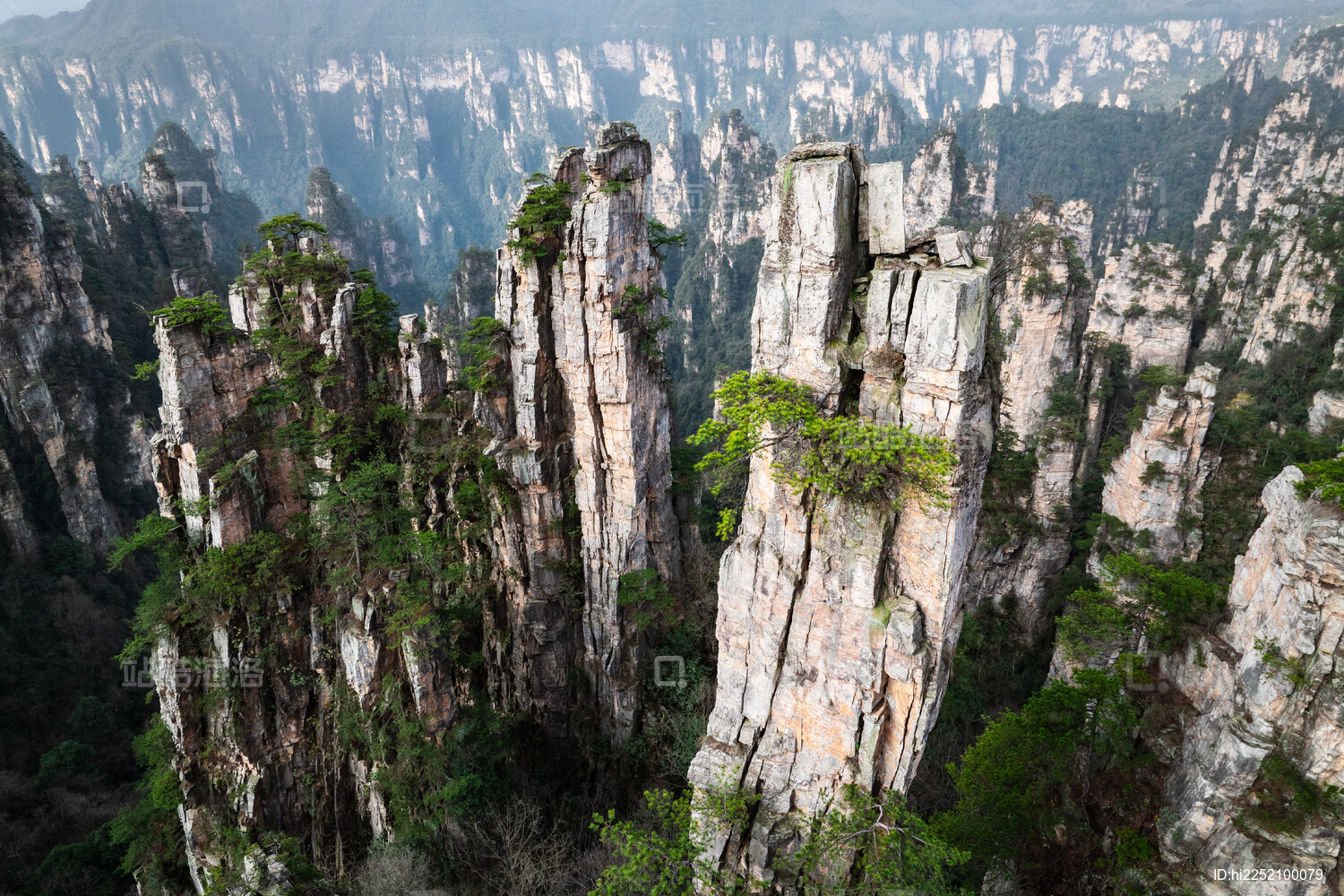Zhangjiajie National Forest Park
Panorama of Zhangjiajie National Forest Park, showcasing unique quartz sandstone peak forest landform
Panorama of Zhangjiajie National Forest Park, showcasing unique quartz sandstone peak forest landform
Zhangjiajie National Forest Park is located in Zhangjiajie City, northwestern Hunan Province. It is China's first national forest park and one of the first batch of 5A-level tourist attractions in China. Covering a total area of 4,810 hectares, it is renowned worldwide for its unique quartz sandstone peak forest landform, known as "the original inspiration for Chinese landscape paintings" and "an expanded bonsai, a miniature fairyland."
In 1992, together with Suoxi Valley Nature Reserve and Tianzi Mountain Nature Reserve, Zhangjiajie National Forest Park formed the Wulingyuan Scenic Area, which was inscribed on the UNESCO World Heritage List. In 2004, it was listed as a World Geopark, and in 2007, it was recognized as one of China's first 5A-level tourist attractions, becoming a natural tourist destination sought after by both domestic and international visitors.
Within the park, over three thousand peculiar peaks rise abruptly from the ground, with eight hundred streams winding through, integrating peaks, forests, caves, lakes, and waterfalls into one, combining beauty, tranquility, wildness, and adventure. The quartz sandstone peak forest here is unique and irreplaceable globally, providing valuable geological samples for studying the evolutionary history of the Earth.
Zhangjiajie National Forest Park has also been the filming location for many famous works, including "Avatar," "Journey to the West," and "Monster Hunt." The prototype of the "Hallelujah Mountain" in "Avatar" is the Qiankun Pillar within the park, which brought Zhangjiajie's beauty to the world stage and made it an internationally renowned tourist destination.
Known as "You haven't truly visited Zhangjiajie without seeing Huangshi Village," it is the largest observation deck in Zhangjiajie. Located at an elevation of 1,200 meters, it has steep cliffs on all sides and an open, flat top offering panoramic views of thousands of stone peaks. Major attractions include Star-Picking Platform, Five-Finger Peak, and Tianqiao Relics.

Stretching 7.5 kilometers in length, it gets its name from flowing past Golden Whip Rock. The stream water is crystal clear, with peculiar peaks lining both banks, making it one of the most beautiful valleys in Zhangjiajie. Along the way, visitors can see attractions like Golden Whip Rock, Splitting Mountain to Save Mother, and Zicao Pond, and it's also a great place to observe wild macaques.
Located in the northwest of Zhangjiajie, it is one of the core areas of the scenic spot. Its most famous attraction is the prototype of "Hallelujah Mountain" - Qiankun Pillar, as well as attractions like Tianxia First Bridge and Mihuatai. Visitors can take the Bailong Elevator to reach Yuanjiajie, experiencing excitement and thrills.

Named after the ancient Tujia leader Xiang Dakun, who declared himself "Son of Heaven" (Tianzi) here. Standing at an elevation of 1,262 meters, it is known as "an expanded bonsai, a miniature fairyland." Major attractions include Imperial Brush Peak, Fairy Scattering Flowers, and Xihai Stone Forest, making it the best place to view the sea of clouds.
The geological landscape of Zhangjiajie National Forest Park is unique globally. Its quartz sandstone peak forest landform was formed through complex geological processes over a long geological history, providing valuable samples for geological research.
There are over 3,000 quartz sandstone peak columns in the park, with heights ranging from tens of meters to over 400 meters, exhibiting various forms and presenting a magnificent spectacle. These peak columns were formed from quartz sandstone deposited in oceans approximately 380 million years ago, shaped by weathering, erosion, and other processes.
The geological evolution history of Zhangjiajie dates back to the Devonian Period, approximately 380 million years ago. It has undergone multiple stages including marine deposition, crustal uplift, and weathering erosion, forming the unique peak forest landform that exists today, recording important information about the Earth's evolution.
In addition to the peak forest landscapes, the park also features numerous caves, such as Huanglong Cave and Longwang Cave. These caves are rich in stalactites, stalagmites, stone pillars, and other peculiar landscapes, representing typical karst landforms.
Located in the mid-subtropical humid monsoon climate zone, Zhangjiajie National Forest Park has complex terrain and diverse climate, providing a suitable living environment for many species. With its rich biodiversity, it is one of China's important gene banks for biological resources.
The park is home to 517 species of woody plants belonging to 93 families and 769 species of herbaceous plants belonging to 162 families, including rare and protected wild plants such as Davidia involucrata (Dove Tree), Taxus chinensis, and Ginkgo biloba. Davidia involucrata is a rare plant endemic to China, known as a "living fossil of plants." When it blooms from April to May, it looks like white doves spreading their wings, creating a beautiful sight. The forest coverage rate reaches 98%, forming a complete forest ecosystem that plays an important role in soil and water conservation and climate regulation.
The park has 146 species of terrestrial vertebrates, including national key protected wild animals such as clouded leopards, forest musk deer, and Temminck's tragopans. Macaques are among the most commonly seen wild animals in the park, mainly distributed in areas like Golden Whip Stream and Yuanjiajie, where visitors can observe them up close. The park is also rich in bird resources with 115 species, including various types of birds of prey and songbirds, making it a paradise for birdwatchers.